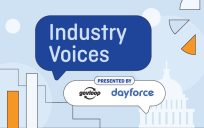The surge in unemployment claims during the last ten months has put a spotlight on a long-standing problem in many federal, state and local agencies: a reliance on outdated mainframe systems and applications as the foundation for critical services.
We saw these challenges in early 2020 with New Jersey’s unemployment system when hundreds of thousands of state residents quickly submitted applications. The sudden 1,600% increase in claims crashed the mainframes supporting critical applications and resulted in Gov. Phil Murphy calling for programmers fluent in COBOL, a coding language now more than 40 years old. Similar situations occurred in New York, California and Oregon – leaving thousands of residents without access to an important lifeline in a time of need.
But those states are not alone. According to a survey from The Verge, 12 total states were found to “still use COBOL in some capacity in their unemployment systems.” According to an NJ.com article, the Department of Labor published a report nearly 20 years ago that outlined the “dire need to modernize the state’s archaic unemployment website.” It said the failure to do so would end in “catastrophic problems” in the event of a spike in unemployment. Talk about a crystal ball.
Many organizations put off modernization for a simple reason: In normal operating conditions, legacy mainframes get the job done, being powerful and capable of handling complex workloads. But they are also rigid, cumbersome and complex, which will inhibit the ability of agencies to meet unexpected surges or to adopt innovative solutions. Plus, the pool of talent capable of coding and maintaining the systems is small and shrinking.
For those willing to take initiative in application modernization, it’s important to keep a few things in mind.
The crux of the issue: The core issues of legacy mainframes go beyond programming languages like COBOL. In fact, the bigger problem is transforming the actual architecture they sit on. To drive horizontal scalability needed for modern cloud-based environments or new software integration, updating the infrastructure is the critical first step toward overall modernization.
Only then can organizations focus on updating code to modern environments like Java or C#. Organizations should also consider other languages like CA-Gen, CA-Telon and Natural that permeate many of these systems and have even less well-versed programmers able to handle their maintenance and updates.
No one-size-fits-all approach: Many organizations fear and therefore avoid complete “rewrite” projects – where developers manually recreate legacy applications from scratch in desired environments. While it is one option, it’s often the least automated, most expensive, and highest-risk solution for such complex systems. More often than not, these projects take years to complete.
When the time for deployment comes, the systems they were designed to replace have changed so significantly that their newly developed replacement is obsolete before it hits production. That said, there really isn’t a one-size-fits-all approach to modernization.
Each organization has individual needs that should be determined through deep assessments with experts who can help decide the target end environment, timeline to get there, and the right tactic that makes the most sense for them. The path forward might include other methods like automated refactoring, rehosting, or replacement.
The benefits reaped: Modernization allows organizations to migrate their applications to the cloud, integrate other critical applications and software, and, as a result, find greater business growth and success. In addition to greater assurance and reliability around applications’ performance, modernization also minimizes expenditures.
A mainframe’s size, usage and complexity can influence how expensive they are to maintain. The cost is often very high. Whereas cloud-based applications can perform at a fraction of that price. According to the “2020 Mainframe Modernization Business Barometer Report,” organizations, in general, could save around $31 million if they modernized the most urgent aspect of their legacy systems.
The gravity of modernization challenges has become paramount today and will only continue to test the government in years to come. While these projects can often seem too daunting to pursue, the risk of complacency far outweighs the risk of transforming legacy mainframes, and the time is now to consider the future of these organizations and, ultimately, their constituents.
Brandon Edenfield is Managing Director for Application Modernization at Advanced.





Thank you for sharing, Brandon. I love how you opened the conversation with an actual example of what is at stake. It’s hard to have conversations about technology and what needs changing if people can’t understand the tangible benefits.